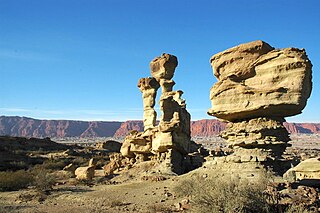
San Juan Province is a province of Argentina, located in the western part of the country. Neighbouring provinces are, moving clockwise from the north, La Rioja, San Luis and Mendoza. It borders with Chile to the west.
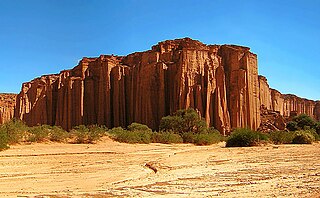
La Rioja, officially Province of La Rioja is a province of Argentina located in the west of the country. The landscape of the province consist of a series of arid to semi-arid mountain ranges and agricultural valleys in between. It is in one of these valleys that the capital of the province, the city of la La Rioja, lies. Neighboring provinces are, from the north clockwise, Catamarca, Córdoba, San Luis and San Juan. The dinosaur Riojasaurus is named after the province.
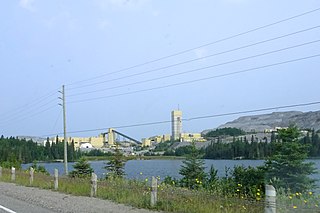
Barrick Gold Corporation is a mining company that produces gold and copper with 16 operating sites in 13 countries. It is headquartered in Toronto, Ontario, Canada. It has mining operations in Argentina, Canada, Chile, Côte d'Ivoire, Democratic Republic of the Congo, Dominican Republic, Mali, Papua New Guinea, Saudi Arabia, Tanzania, the United States and Zambia. In 2023, it produced 4.05 million ounces of gold at all-in sustaining costs of $1,335/ounce and 420 million pounds of copper at all-in sustaining costs of $3.21/pound. As of 31 December 2023, the company had 77 million ounces of proven and probable gold reserves.
Yamana Gold Inc. is a Canadian company that owns and operates gold, silver and copper mines in Canada, Chile, Brazil and Argentina. Headquartered in Toronto, the company was founded in 1994 and became listed on the Toronto Stock Exchange in 1995, the New York Stock Exchange in 2007, and the London Stock Exchange in 2020. The company became a gold producer after its 2003 re-restructuring in which Peter Marrone took over as chief executive officer and it merged with Brazilian company Santa Elina Mines Corporation. The combined company was able to use Yamana's access to capital with Santa Elina development properties to bring the Chapada mine into production. From there the company combined with other TSX-listed companies RNC Gold, Desert Sun Mining, Viceroy Exploration, Northern Orion Resources, Meridian Gold, Osisko Mining and Extorre Gold Mines which each contributed either a producing mine or a development project that was able to come into commercial production. The company was acquired by Pan American Silver in March 2023.

The Jáchal River is a river in the province of San Juan, Argentina. It is part of the Desaguadero River basin, and one of the most important permanent watercourses in the province, with an average flow of 9 cubic metres per second (320 cu ft/s). It is born from the confluence of the Río de la Palca and the Blanco River, in the northwest of San Juan.

Ángel Eduardo Maza is an Argentine Justicialist Party (PJ) politician. He was the governor of La Rioja Province during several terms, until he was ousted by impeachment in 2007. His sister, Ada Maza, is a national senator.
Famatina is a town in the province of La Rioja, Argentina. It has 6,371 inhabitants as per the 2001 census [INDEC], and is the only municipality in the Famatina Department. Located in fertile valley between Sierra de Famatina and Sierra de Velasco Famatina's economy revolve around jojoba and olive agriculture and tourism.

Romania ranks tenth in the world in terms of the diversity of minerals produced in the country. Around 60 different minerals are currently produced in Romania. The richest mineral deposits in the country are halite.
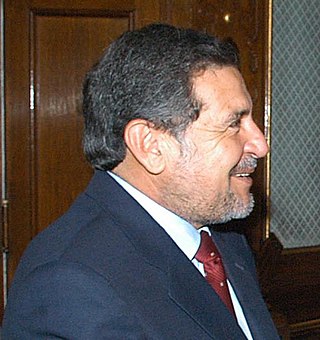
Luis Beder Herrera is an Argentine Justicialist Party (PJ) politician. He was the governor of La Rioja Province from 2007 to 2015.
Mining in Ecuador was slow to develop in comparison to other Latin American countries, in spite of large mineral reserves. As late as 2012, according to the United Nations, Ecuador received less foreign direct investment per person than any other country in Latin America. During the 1980s, mining contributed only 0.7 percent to the Ecuadorian economy and employed around 7,000 people. Minerals were located in regions with little to no access, hindering exploration. Ecuador has reserves of gold, silver, copper, zinc, uranium, lead, sulfur, kaolin and limestone. The latter practically dominated the early industry as it was used in local cement plants.

Orex Exploration is a former Canadian gold mining company that conducted exploration work on mining properties it owned in the Goldboro and Guysborough County areas of Nova Scotia. The properties owned by Orex were the sites of the former Boston Richardson Mine, Dolliver Mountain Mine, West Goldbrook Mine, and East Goldbrook Mine which operated between 1892 and 1912. Headquartered in Rouyn-Noranda, Quebec, the company was founded in 1987 and raised funds for exploration work, in part, by issuing stocks traded on the Montreal Stock Exchange and then the TSX Venture Exchange. It became a subsidiary of Anaconda Mining Inc. after Anaconda acquired the company in a stock swap deal in 2017.
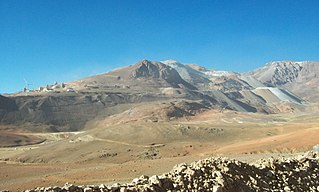
Pascua-Lama is an open pit mining project of gold, silver, copper and other minerals. Pascua Lama is located in the Andes mountains, in the southern reaches of Atacama Desert, straddling the border between Chile and the Argentina Northwest at an altitude of over 4,500 metres. Toronto-based Barrick Gold, the world's largest gold mining company, is developing the project. Due to its proximity to glaciers, Pascua-Lama has caused controversy and public protest in Chile, including demonstrations and petitions presented to the Chilean government. Chile has not approved the project.
Canadian mining in Latin America and the Caribbean began in the 20th century. Latin America and the Caribbean's vast resources give the region great geopolitical importance, attracting foreign interest for centuries. From the colonial race of European empires, to the multinationals of today's neoliberal capitalist world, this region continues to draw interest. Canada's involvement in Latin America increased dramatically since 1989 with several landmark negotiations and agreements. By 2009, the Canadian larger-company mineral exploration market in this region was valued at US$1.7 billion.
Pueblo Viejo mine is an open-pit gold and silver mine in the Sánchez Ramírez Province of the Dominican Republic where mining operations started in 2012 and expect to cease in 2041. It is the largest gold mine in Latin America and 13th largest gold mine in the world. The mine is run by Pueblo Viejo Dominicana Corporation (PVDC), which is 60% owned by Barrick Gold Corporation and 40% owned by Newmont Corporation.
A gold cyanidation ban refers to the legislation that bans mining gold through the gold cyanidation technique.

Sergio Casas is an Argentine politician who was Governor of La Rioja Province from 2015 to 2019. He previously served as Vice Governor and as a member of the La Rioja provincial legislature. Since 2019, he has been a National Deputy.
The Osisko Mining Corporation is a Canadian company that conducts mineral exploration work with a focus on seeking to develop a gold mine in Ontario or Quebec. The company adopted its name following the 2015 merger of five companies that resulted in the re-uniting of the executive management team of the original Osisko Mining Corporation.
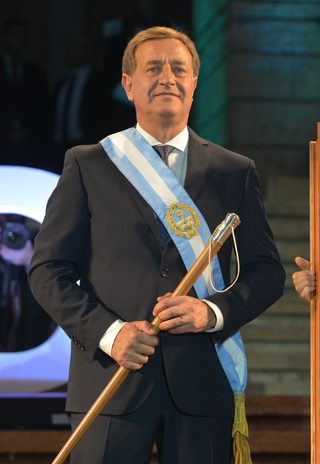
Rodolfo Alejandro Suarez is an Argentine Radical Civic Union politician who is currently serving as a National Senator for Mendoza Province since 10 December 2023. He previously served as governor of Mendoza from 2019 to 2023, and from 2014 to 2019, he was intendente (mayor) of the City of Mendoza, having assumed office following the death of then-mayor Víctor Fayad.
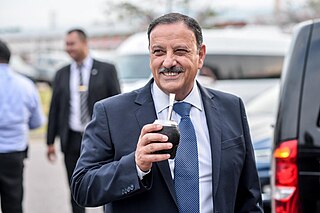
Ricardo Clemente Quintela is an Argentine Justicialist Party politician who is currently Governor of La Rioja Province, since 11 December 2019.

Mirtha María Teresita Luna is an Argentine politician. Formerly a member of the Justicialist Party, she served as Vice Governor of La Rioja Province from 2007 to 2011, and later as a National Senator for La Rioja from 2011 to 2017. In 2019, she left the Justicialist Party and became part of the Cambiemos coalition.












